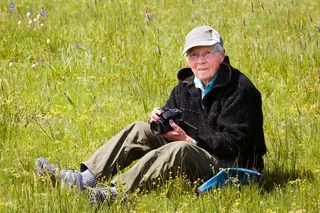Don't Miss the Central Oregon Superbloom
/Every summer brings pretty wildflowers to arid regions east of Bend, but this year is special. Like Southern California this spring, we’re witnessing a superbloom due to high snowfall and greater-than-average rainfall.
A friend who lives in Alfalfa, about 15 miles east of Bend, said, “I have never seen such a phenomenal wildflower season in 30 years, and it may be another 30 years before it happens again.”
You don't want to miss it. Head out this week to the Oregon Badlands Wilderness or other rocky, sandy areas east or north of Bend. Go early, or go late to avoid high temperatures. But go.
On BLM land yesterday, about 20 minutes east of Bend, the ground was carpeted in more threadleaf phacelia (Phacelia linearis) than I’ve ever seen before.
Threadleaf phacelia
Tucked under all those elegant purple flowers you’ll spot mound after mount of pink—those are cheerful dwarf monkeyflowers (Diplacus nanus).
Also look for pom-poms of very happy buckwheats (Eriogonum spp.), which as deeply drought-tolerant species, are probably getting more water than they know what to do with.
Sulphur-flower buckwheat. Photo: M.A. Willson
If you can’t get out to explore the high desert in the next week or so, keep trying. Yellow western groundsel (Senecio integerrimus) and Oregon sunshine (Eriophyllum lanatum) will be out in force, along with everyone’s favorite, green-banded mariposa lilies (Calochortus macrocarpus). If you go in the evening, also keep an eye out for night-blooming granite gilia (Linanthus pungens).
Green-banded mariposa lily. Photo: Ron Halvorson










